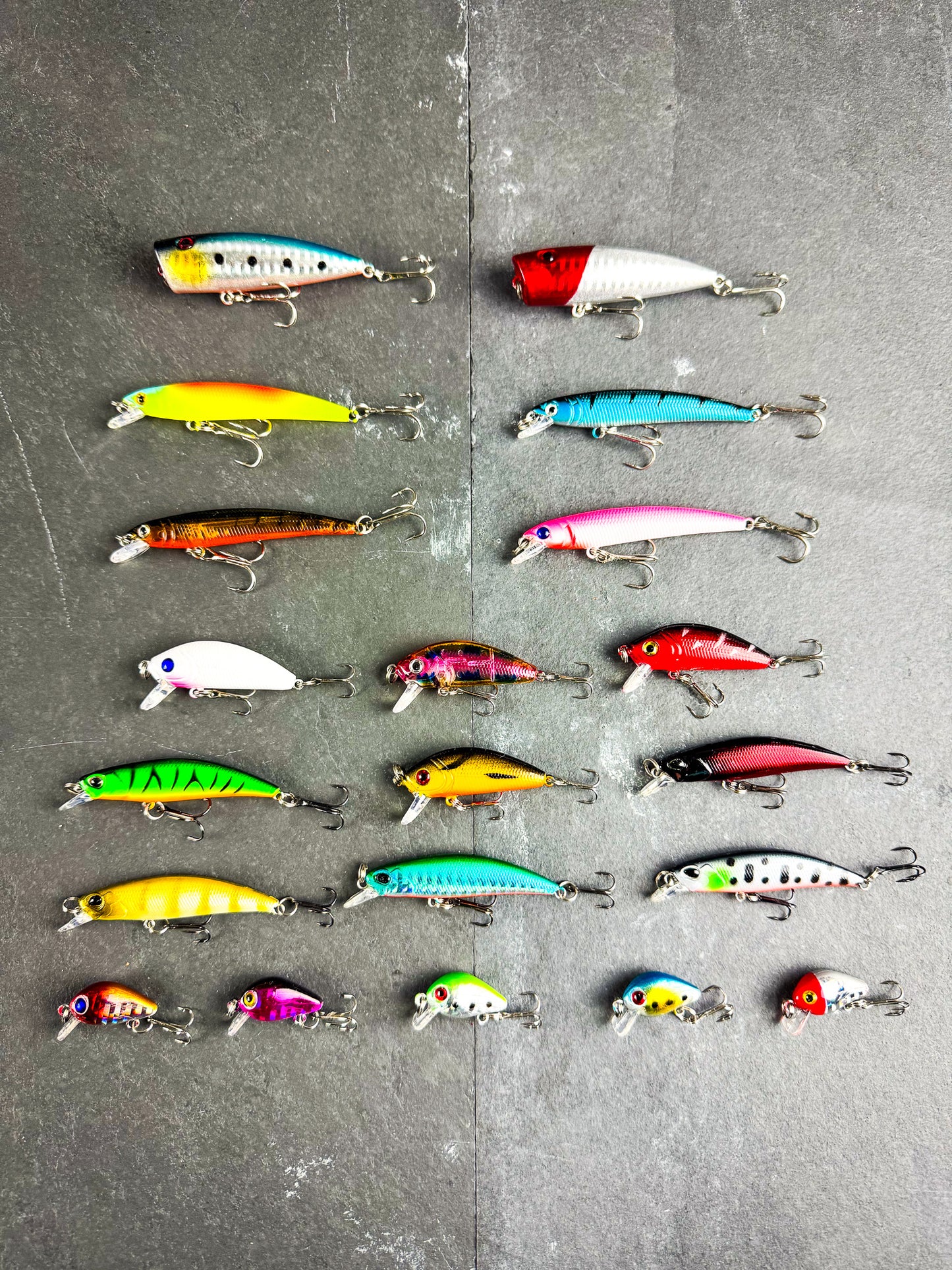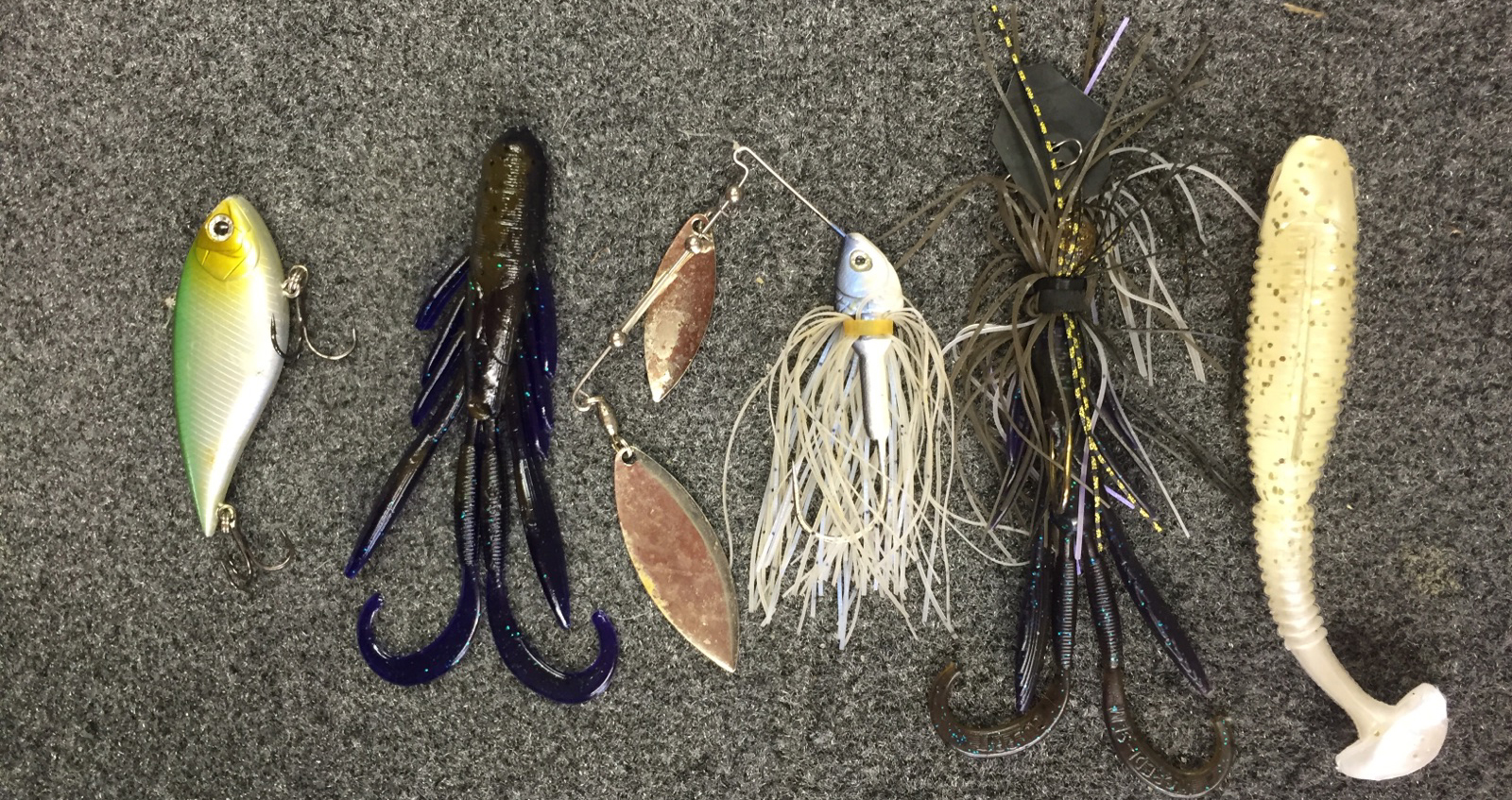7 Must-Have Best Bass Lures for Catching Trophy-Sized Fish
Discover the Ideal Techniques for Selecting Bass Lures for Your Next Fishing Expedition
Choosing the ideal bass Lures can significantly impact angling success. Fishermens have to take into consideration numerous elements, such as seasonal patterns and water clearness. Comprehending bass habits is crucial (Best Bass Fishing Lures). Choosing Lures that resemble all-natural victim can result in better outcomes. Yet, lots of are not sure regarding the most effective techniques to apply. What strategies should one focus on to improve their fishing experience? The solutions hinge on taking a look at certain conditions and adjusting appropriately
Recognizing Bass Actions and Environment
Understanding the nuances of bass habits and habitat is crucial for any fishermen aiming to boost their fishing success. Bass are typically found in numerous environments, including lakes, rivers, and reservoirs, where they seek structure such as immersed rocks, vegetation, and fallen trees. Their actions is heavily affected by water temperature, light degrees, and available forage.
During warmer months, bass tend to be more active, commonly living in shallower waters, while in cooler months, they retreat to deeper locations. Additionally, bass show patterns of feeding, frequently being much more hostile throughout dawn and sunset. They are opportunistic killers, victimizing smaller sized fish, insects, and crustaceans. Comprehending these variables can assist fishermens identify prime angling locations, as well as the very best times to fish. Recognizing bass behavior in connection with their environment is critical for successful fishing, assisting fishermens in making educated decisions regarding where to cast their lines.
Matching Lures to Seasonal Issues
As fishermens adapt their methods to transforming periods, matching Lures to seasonal conditions ends up being an important method for boosting angling success. In springtime, when bass are arising from winter months inactivity, fishermens frequently use spinnerbaits and shallow-running crankbaits to simulate the activities of victim. Summertime requires a shift to topwater Lures or soft plastic worms, as bass seek shade and cooler waters. Throughout the autumn, when bass are fattening up prior to winter months, bigger Lures that imitate baitfish can be efficient. Wintertime requires a more subtle approach; jigs and slow-moving finesse baits frequently yield far better results as bass become lethargic. Understanding these seasonal patterns assists fishermens select the right attractions, thus enhancing their opportunities of an effective catch. By lining up lure choices with the natural actions of bass throughout the year, fishermens can maximize their fishing experience and boost their total success on the water.
The Relevance of Shade Selection
Shade option plays an essential role in bass angling, as it can dramatically influence a fisher's success. Aspects such as water clarity, seasonal changes, and the particular preferences of different bass varieties all affect which colors are most reliable. Comprehending these aspects allows fishermens to make informed selections that enhance their angling experience.
Water Clarity Considerations
When the water quality differs, picking the right bass appeal shade ends up being critical for bring in fish. In clear water, all-natural colors such as shad or bluegill patterns often tend to be extra efficient, as they resemble the target bass are accustomed to seeing. On the other hand, in dirty or stained water, brighter shades like chartreuse or fire tiger can improve visibility, making it much easier for bass to discover the attraction. The comparison in between the lure and the surrounding setting plays a considerable duty in angling success. Anglers need to additionally take into consideration the time of day; lighter shades might function much better in bright sunlight, while darker tones can be much more efficient throughout low-light conditions. Adjusting appeal color to water clarity enhances the chances of a successful catch.
Seasonal Color Scheme
Exactly how do seasonal modifications affect bass behavior and lure effectiveness? As temperatures shift throughout the year, bass adjust their feeding habits and favored habitats, making color selection important for successful angling. In springtime, when bass generate, brilliant shades like chartreuse can stand out. Summer season frequently call for even more all-natural hues, such as environment-friendly pumpkin or shad patterns, as bass look for to mix in with their surroundings. During fall, dynamic shades like orange and red resemble the transforming foliage, attracting bass as they plan for winter months. In winter, controlled tones such as gray or white may be more reliable, as bass end up being tired. Inevitably, understanding seasonal color scheme allows fishermens to select Lures that reverberate with bass's present behavior, improving their possibilities of success.

Species-Specific Preferences
Understanding species-specific preferences is essential for fishermens aiming to enhance their lure selection. Various bass species, such as largemouth and smallmouth, exhibit distinct color choices based on their environment and feeding actions. Largemouth bass usually like darker hues, specifically in dirty waters, where colors like dark and black environment-friendly resemble natural target. In contrast, smallmouth bass are more probable to react to brighter shades, such as chartreuse and orange, especially in clear waters. In addition, water clarity and light conditions can influence these preferences, making it important for anglers to adapt their attraction shade accordingly. By thinking about these species-specific preferences, fishermens can boost their opportunities of an effective fishing journey, inevitably improving their total experience on the water.
Picking the Right Lure Kind for Various Situations
Choosing the ideal attraction type for numerous angling circumstances is essential for success on the water. Anglers have to consider factors such as water clarity, climate condition, and the bass's feeding habits. For dirty water, darker-colored attractions, such as jigs or spinnerbaits, can be reliable, as they create a solid silhouette. In clear water, natural-colored Lures like soft plastics or topwater baits may attract careful bass.
When angling in hefty cover, utilizing heavy jigs or weedless gears can assist navigate through obstacles without snagging. Conversely, open water circumstances may profit from crankbaits or swimbaits that can cover higher distances. Furthermore, throughout cooler months, slower-moving Lures tend to be much more effective, while warmer problems might ask for faster retrieves. By adapting appeal options to specific atmospheres, anglers increase their opportunities of an effective catch.
Trying out Size and Action

Fishermens frequently explore a range of sizes and activities to establish what works best under differing problems. A sluggish, subtle action could be suitable in colder water, while a quickly, hostile fetch can be extra effective in warmer temperatures. By meticulously observing the bass's responses to these variations, fishermens can fine-tune their technique and boost their opportunities of a successful catch. Inevitably, the best combination of size and action can make a significant distinction on the water.
Checking Out Water Problems for Better Lure Selections
Recognizing water conditions is essential for picking the best bass attraction. Variables such as water quality and temperature level can dramatically affect fish actions and feeding patterns. By analyzing these problems, fishermens can make informed choices that improve their chances of a successful catch.
Analyzing Water Quality
Just how does read review water clarity influence the efficiency of bass attractions? Water clearness considerably influences bass actions and the presence of appeals. In clear water, bass tend to be a lot more cautious, making natural-colored Lures more effective as they mimic target closely. Fishermens might pick lighter, subtler colors to stay clear of scaring fish. On the other hand, in murky or tarnished water, more vibrant and more lively shades stand apart, standing out even in low important link exposure conditions. Furthermore, the sort of appeal can vary; slower-moving Lures might function better in clear water, while faster, extra hostile discussions can tempt bass in murkier settings. Recognizing the clearness of the water permits fishermens to pick Lures that maximize their chances of success throughout their fishing trips.
Understanding Water Temperature Level
As water temperature level rises and fall, it straight influences bass actions and their feeding patterns, making it vital for anglers to consider when choosing appeals. Typically, bass choose warmer temperatures, typically between 65 ° F and 75 ° F, where their metabolic process is heightened, causing raised feeding task. In cooler water, bass become inactive and might choose slower-moving attractions, such as jigs or soft plastics. Conversely, during warmer months, faster presentations like crankbaits or topwater Lures can be more effective. Fishermens need to also consider seasonal modifications; as an example, springtime warming leads to aggressive feeding as bass prepare to spawn. By comprehending exactly how temperature level affects bass, anglers can make educated choices on appeal selection, considerably boosting their possibilities of success.
Tips for Organizing and Maintaining Your Draw Collection
While several fishermens focus on selecting the best Lures for their following fishing expedition, organizing and keeping an attraction collection is just as important for boosting effectiveness and performance. A well-structured collection allows fishermens to promptly situate the Lures they need, lowering time spent searching via take on boxes.
To start, fishermens should classify Lures by type-- crankbaits, jigs, or soft plastics-- making it much easier to find certain alternatives. Using take on trays or boxes with flexible areas can assist maintain every little thing organized. Classifying containers streamlines the process even more, helping fast identification.
Routine upkeep is also essential; fishermens must examine Lures for indicators of wear, such as rusted hooks or harmed paint, and change them as required. Cleansing Lures after each journey prevents deterioration and ensures durability. By implementing these business and maintenance approaches, fishermens can enhance their angling experience and ensure their Lures are always in ideal problem.
Often Asked Questions
What Are the very best Brand Names for Bass Lures?
The most effective brands for bass Lures consist of Rapala, Strike King, and Berkley. These brands are renowned for their performance, innovation, and quality, appealing to both amateur and knowledgeable fishermens seeking effective angling experiences.
Exactly How Lots of Lures Should I Tackle a Journey?
A regular fishing journey must consist of around five to 10 lures, enabling for flexibility while staying clear of mess. This choice should encompass numerous types and shades to adjust to altering conditions and fish choices.
Can I Make My Own Bass Lures?
Yes, individuals can make their own bass Lures utilizing different materials and methods - Best Bass Lures South Africa. Crafting Lures allows for personalization, allowing anglers to try out shades, dimensions, and forms to fit certain fishing conditions and choices
What's the Typical Life-span of a Bass Lure?
The average life-span of a bass lure differs, typically lasting from a few months to a number of years, depending on worldly quality, use regularity, and environmental conditions. Appropriate treatment can substantially expand an appeal's use.
Are There Particular Lures for Night Angling?
Yes, there are specific Lures created for night fishing. Dark shades and Lures that create vibrations, such as spinnerbaits or jigs, commonly attract bass in low-light problems, improving exposure and activating predacious impulses.
Conversely, in murky or discolored water, brighter colors like chartreuse or fire tiger can improve visibility, making it less complicated for bass to find the attraction. Bigger Lures can draw in bigger bass, while smaller Lures may be extra effective for capturing smaller sized fish. Furthermore, the type of lure can vary; slower-moving Lures may function better in clear water, while much faster, extra hostile discussions can lure bass in murkier settings. As water temperature level rises and fall, it straight affects bass behavior and their feeding patterns, making it vital go for fishermens to take into consideration when choosing attractions. While many anglers concentrate on selecting the ideal Lures for their next fishing journey, keeping a lure and organizing collection is just as crucial for enhancing effectiveness and efficiency.